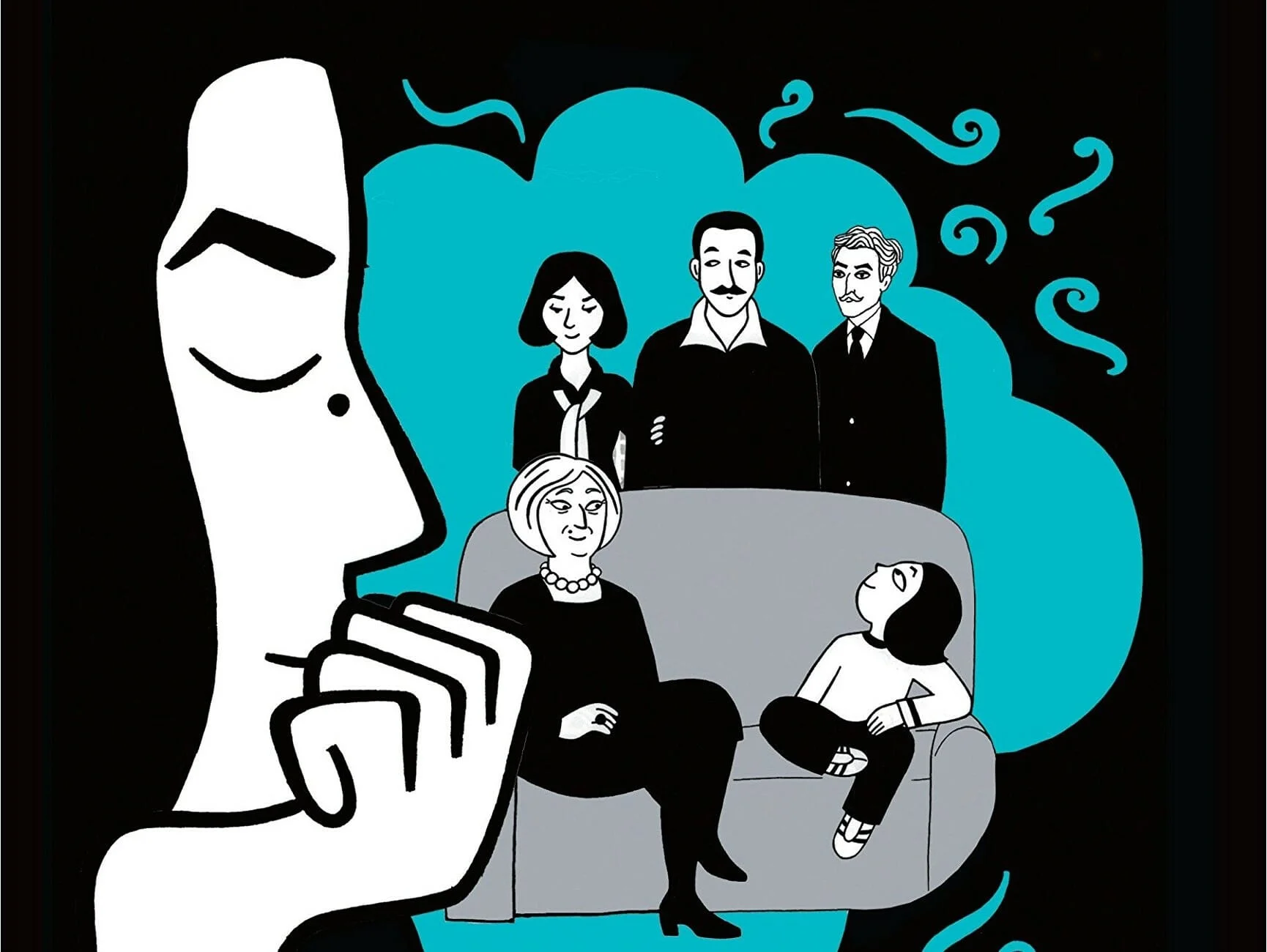
Persepolis | An intimate narration of war
Author
Year
When she grows up, Marjane Satrapi wants to be a prophet. Born and raised in Iran (previously called the Imperial State of Persia, and then the Imperial State of Iran), she is used to talking to God every night and strongly believes that the Shah of Iran, the King, is a personification of God. When she is still a child, her dreams shatter, and in 1979 a popular revolution results in the overthrow of the monarchy. It is the first of many wars that Marjane will deal with. Through her innocent point of view, the graphic novel Persepolis displays an intimate narration of war.
A part of unknown recent history
Far from being a historic essay, Satrapi chooses the form of autobiography, giving a totally personal aspect to the story. When Marjane comes into the world, Mohammad Reza Pahlavi still ruled the Imperial State of Iran, which lasted from 1941 to 1979. (Prior to this, the Imperial State of Persia had been in existence from 1925 – 1935.) Then in 1954 the Shah turned the constitutional monarchy into an autocracy. After the change, his authority grew stronger, in opposition to the moderate administration that characterized previous years. Pahlavi tried to stabilize his power through the westernization of politics, including such factors as industrial and agricultural reforms, female suffrage, and a divorce law.
Even so, many parts of the population considered him merely a puppet in the hands of Great Britain and the USA. In 1979 the monarchy collapsed after an outbreak of demonstrations, many put down with violence. It was the beginning of the Islamic Republic of Iran and, for a lot of people, a new hope.

A story inside history
Marjane’s family was among those people. She grew up in a progressive, modern, and feminist context. Her parents encouraged her curiosity and political interest: she attended a French school, her parents pushed her to achieve personal fulfillment. They allowed her to listen to American music, too. As she narrates, nobody could imagine that revolution was the beginning of the end of every freedom.
Soon every aspect of private and public life came under the control of a committee, formed by Islamic fanatics. Women had to wear the veil, parties and alcohol were forbidden. After a short time, in 1988 Iran waged war against Iraq. Like all her family and friends, Marjane had to spend many years living with the constant fear of bombs and death. Until she was fourteen and her parents decided to send her to Europe. In Vienna, there started Marjane’s personal war to survive in a new world.
Persepolis: graphic novel, human drama and war
One of Persepolis‘ main strengths is the analogy between Marjane’s personal story and that of her country, similar to Garcia Marquez‘s One Hundred Years of Solitude. But while the South American author uses a family saga as a metaphor for a whole country story, in Satrapi’s graphic novel the two storylines overlap.
On the one hand, there’s Marjane’s life, from childhood to adulthood. While she still lives with her parents, she has to fight to find a way to express her personality in a country full of prohibition. Then, when she moves to Vienna, her battle becomes more and more difficult. She would like to integrate into the city, but she cannot speak German and her traumatic background holds her down. From that moment on, she follows what happens in Iran through television and newspapers, for what she can understand of the language. She is upset about how little about her country people know in Europe; for a while, she distances herself from who she had been. Things change only when she comes back to Iran and once again experiences the conflict personally.

On the other hand, there is the violent transition that led to Persia becoming Iran. One of the most bloody, troubled, and controversial conflicts of recent history comes violently out, without any censorship. But the point of view of a child helps to soften the impact of the events, adding innocence and spontaneity to a violent and complicated story. Even family and personal issues contribute to lightening the context: as much as they can be hard to face for the protagonist, they always seem manageable if compared to war and repression. The protagonist narrates war as she experienced it, giving an intimate narration of a huge historical event.
Contrasted drawings reflecting the mind
Satrapi’s Iran takes shape through sharp black and white drawings with no trace of gray or shades. This absence of nuances perfectly resonates in Iranian people’s mindsets. The will to progress towards westernization clashes with religious traditions, as much as modernization tackles conservatism in a never-ending fight. Everything contributes to depicting a country, a population, a culture, the inner and external world as lived by the author. Thus, Persepolis results in a graphic novel not only about war but rather about a centuries-old heritage and its population’s efforts to change a world without erasing it.
The graphic novel was first published by L’Association in a four-volume format in 2000. It is the first graphic novel ever published by an Iranian author and sold thousands of copies around the world. The Iranian government banned the book. It won several awards, among which the Angoulême International Comics Festival Prize for Scenario, and according to TIME is in Best Comics of 2003 list. In 2007 was released the movie based on the comic, directed by Marjane Satrapi and Vincent Paronnaud, and nominated for Best Animated Feature at the 80th Academy Awards.
Tag
Buy a ☕ for Hypercritic







